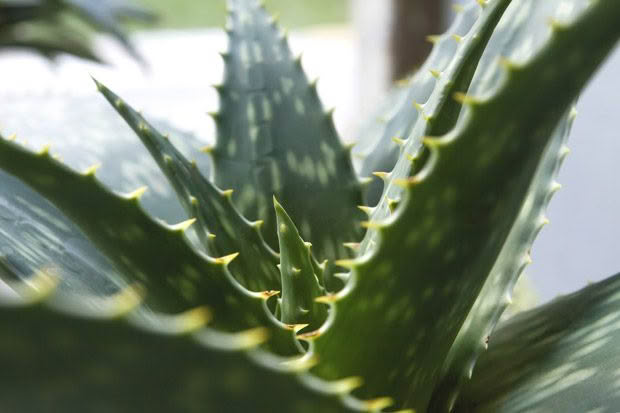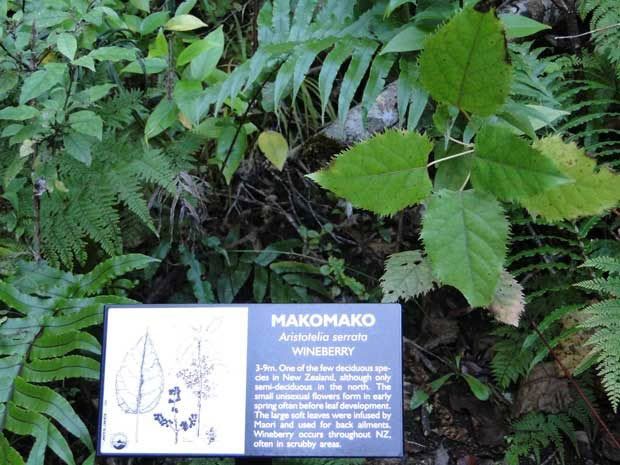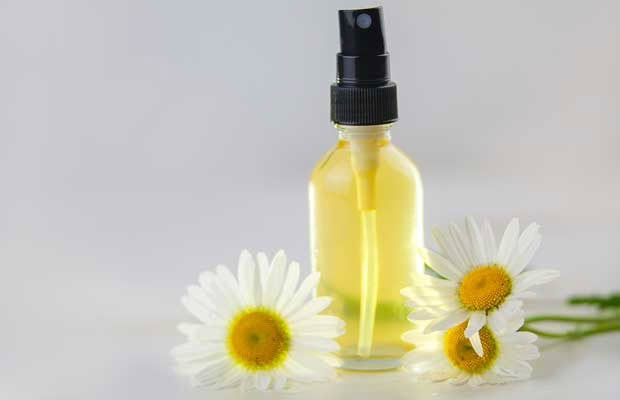How to make natural after-sun skincare using aloe vera, chamomile, makomako and lavender

Looking for a natural solution for too much sun? Jane Wrigglesworth digs up four herbs good for treating mild sunburn.
As the weather heats up, so too does the intensity of the sun’s UV rays, which means it’s time to break out the sunscreen. But even with the best intentions, we sometimes get caught out, and that means sunburn. Ouch!
Mild sunburn can usually be treated at home, but a doctor should treat severe, blistering sunburn.
FOUR HERBS FOR AFTER-SUN CARE
Aloe vera
The soothing gel inside the succulent leaves of aloe vera has anti-inflammatory, antimicrobial, analgesic and antioxidant properties. It has long been used in its raw form to treat burns, blisters, wounds, eczema, psoriasis and inflammation. Studies show that it’s an effective treatment for first- and second-degree burns. (Mild sunburn is a first-degree burn; a more severe sunburn that causes damage deeper in the skin is a second-degree burn). A review of four controlled clinical trials found that aloe vera reduced the healing time of burn wounds by nine days compared with conventional medicine.
Aloe vera works well because it keeps the skin moist (beneficial for burned or peeling skin), reduces inflammation, promotes cell and collagen proliferation for skin healing, and contains enzymes that break down bradykinin, the chemical messenger responsible for transmitting pain signals.
To harvest aloe vera, choose a mature leaf and cut it down the middle without cutting all the way through. Peel back the cut sides and remove the clear gel. Avoid the greeny-yellow sap close to the skin, as this is an irritant. The gel oxidizes quickly, so use it straight away. It cannot be stored for long either, as aloe vera is 96 per cent water. Commercial preparations include stabilizers and preservatives to extend shelf-life.
Note: Do an allergy test on your skin before you slather your whole body. Do this before you need it for sunburn. You don’t want to have to wait for 24 hours to see if you react to the gel before you can treat your sunburn.

Chamomile will reduce skin swelling.
Chamomile
Chamomile has many uses, not least for its anti-inflammatory and antioxidant activities. It is also a nitric oxide (NO) inhibitor. Exposure to sun prompts NO release, which in average amounts can be beneficial. However, overexposure to sunlight dramatically increases the production of NO, causing the redness and inflammation associated with sunburn.
A skin wash of cold chamomile tea may be beneficial in reducing redness and swelling. Make a strong brew, dip a flannel or piece of cotton in the cooled liquid and use as a compress to cool the skin. You can also mix a little chamomile tea with aloe vera gel for added benefit.

Make a soothing lavender spray.
Lavender
Lavender also has anti-inflammatory, antioxidant and analgesic actions and has been found to accelerate wound healing.
Make a cooling compress as per the chamomile skin wash, substituting chamomile with lavender flowers (Lavandula angustifolia). Or buy a lavender (or chamomile) hydrosol and spray this onto your skin.
You can also use diluted lavender (or chamomile) essential oil, but be mindful of dilution rates. The essential oils must be diluted in a carrier oil (aloe vera is not a true carrier oil, and care must be taken if combining with essential oils alone) before applying to the skin.
“A 0.5 to one per cent essential-oil dilution is a gentle dilution, which is a best for people with sensitive skins and compromised immune systems,” says qualified clinical aromatherapist Melanie Harrison. “Less is more with essential oils, although lavender and chamomile are both gentle and healing oils.”
Use one drop of essential oil per one teaspoon of carrier oil, such as sweet almond, rosehip, jojoba and kukui nut oils.

Makomako
Makomako, or wineberry (Aristotelia serrata), is an excellent native herb for burns. Early advocates wrote of its usefulness, including one P. Smith, a Māori schoolteacher, whose written notes were displayed in an exhibition in Wellington in 1940. “Nearly fill a billy with leaves. Add enough water to cover the leaves. Boil till the water is coloured. Use for boils and burns. Bathe the boil or burn twice a day.”
Moa Stevens of Ngāti Porou, Hicks Bay, also confirmed its use in notes (written in 1941) held by the Department of Scientific and Industrial Research: “Leaves boiled, used as a pack for burns; infusion also applied.”
Make sure the liquid is cooled before use.
HOW TO TREAT MILD SUNBURN NATURALLY
1. Cool the skin. Apply a cool chamomile or lavender compress. Avoid soap as it may irritate.
2. Soothe and keep the skin moisturized with aloe vera gel. If rubbing the gel onto the skin is too painful, make a spray (see recipe below) and use it throughout the day.
3. Rehydrate. Drink plenty of water to keep yourself cool and to replace fluids lost from sun exposure.

MAKE YOUR OWN AFTER-SUN SOOTHING SPRAY
This spray is ideal if rubbing gel onto the skin is too painful. However, it should be fresh. Discard any leftover spray and make a new one the following day.
Mix one to two teaspoons of aloe vera gel and one cup of strong chamomile or lavender tea. Add to a glass spray bottle and spray on sunburn as needed. Shake before use.
DIY after-sun makomako compress or spray
Mix one to two teaspoons of aloe vera gel and one cup of strong chamomile, lavender or makomako tea.

